3653 results in ebooks in fluid mechanics
Contents
-
- Book:
- Turbulence in the Atmosphere
- Published online:
- 11 April 2011
- Print publication:
- 28 January 2010, pp v-viii
-
- Chapter
- Export citation
13 - Probability densities and distributions
- from Part III - Statistical representation of turbulence
-
- Book:
- Turbulence in the Atmosphere
- Published online:
- 11 April 2011
- Print publication:
- 28 January 2010, pp 297-312
-
- Chapter
- Export citation
9 - The atmospheric boundary layer
- from Part II - Turbulence in the atmospheric boundary layer
-
- Book:
- Turbulence in the Atmosphere
- Published online:
- 11 April 2011
- Print publication:
- 28 January 2010, pp 193-214
-
- Chapter
- Export citation
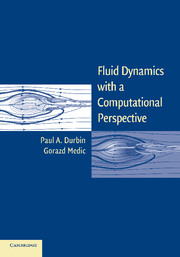
Fluid Dynamics with a Computational Perspective
-
- Published online:
- 28 January 2010
- Print publication:
- 17 September 2007
16 - Statistics in turbulence analysis
- from Part III - Statistical representation of turbulence
-
- Book:
- Turbulence in the Atmosphere
- Published online:
- 11 April 2011
- Print publication:
- 28 January 2010, pp 361-386
-
- Chapter
- Export citation
Part I - A grammar of turbulence
-
- Book:
- Turbulence in the Atmosphere
- Published online:
- 11 April 2011
- Print publication:
- 28 January 2010, pp 1-2
-
- Chapter
- Export citation
1 - Introduction
- from Part I - A grammar of turbulence
-
- Book:
- Turbulence in the Atmosphere
- Published online:
- 11 April 2011
- Print publication:
- 28 January 2010, pp 3-26
-
- Chapter
- Export citation
Part III - Statistical representation of turbulence
-
- Book:
- Turbulence in the Atmosphere
- Published online:
- 11 April 2011
- Print publication:
- 28 January 2010, pp 295-296
-
- Chapter
- Export citation
4 - Turbulent fluxes
- from Part I - A grammar of turbulence
-
- Book:
- Turbulence in the Atmosphere
- Published online:
- 11 April 2011
- Print publication:
- 28 January 2010, pp 75-88
-
- Chapter
- Export citation
15 - Covariances, autocorrelations, and spectra
- from Part III - Statistical representation of turbulence
-
- Book:
- Turbulence in the Atmosphere
- Published online:
- 11 April 2011
- Print publication:
- 28 January 2010, pp 331-360
-
- Chapter
- Export citation
5 - Conservation equations for covariances
- from Part I - A grammar of turbulence
-
- Book:
- Turbulence in the Atmosphere
- Published online:
- 11 April 2011
- Print publication:
- 28 January 2010, pp 89-114
-
- Chapter
- Export citation
7 - Kolmogorov scaling, its extensions, and two-dimensional turbulence
- from Part I - A grammar of turbulence
-
- Book:
- Turbulence in the Atmosphere
- Published online:
- 11 April 2011
- Print publication:
- 28 January 2010, pp 145-172
-
- Chapter
- Export citation
2 - Getting to know turbulence
- from Part I - A grammar of turbulence
-
- Book:
- Turbulence in the Atmosphere
- Published online:
- 11 April 2011
- Print publication:
- 28 January 2010, pp 27-54
-
- Chapter
- Export citation
12 - The stable boundary layer
- from Part II - Turbulence in the atmospheric boundary layer
-
- Book:
- Turbulence in the Atmosphere
- Published online:
- 11 April 2011
- Print publication:
- 28 January 2010, pp 267-294
-
- Chapter
- Export citation
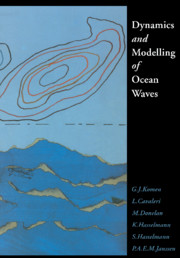
Dynamics and Modelling of Ocean Waves
-
- Published online:
- 22 January 2010
- Print publication:
- 15 September 1994
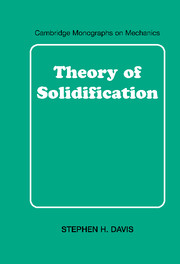
Theory of Solidification
-
- Published online:
- 20 January 2010
- Print publication:
- 08 October 2001
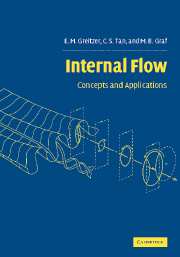
Internal Flow
- Concepts and Applications
-
- Published online:
- 14 January 2010
- Print publication:
- 29 April 2004
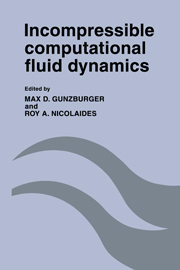
Incompressible Computational Fluid Dynamics
- Trends and Advances
-
- Published online:
- 12 January 2010
- Print publication:
- 28 May 1993
9 - Spray Applications
-
- Book:
- Fluid Dynamics and Transport of Droplets and Sprays
- Published online:
- 05 June 2012
- Print publication:
- 11 January 2010, pp 285-313
-
- Chapter
- Export citation
Preface
-
- Book:
- Fluid Dynamics and Transport of Droplets and Sprays
- Published online:
- 05 June 2012
- Print publication:
- 11 January 2010, pp xi-xiii
-
- Chapter
- Export citation
